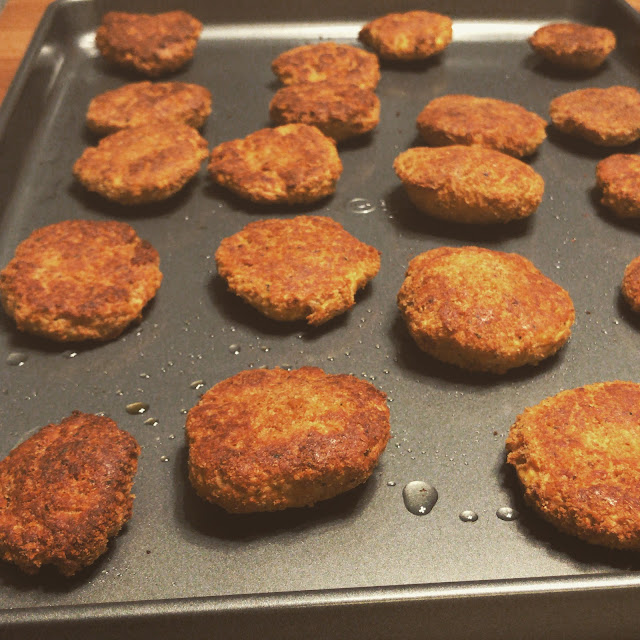Diet diversification, the 10-month old baby edition
Just a few short weeks after introducing my son to purees, I started upping his diet diversity by introducing more textures and flavours. In the traditional way of introducing solids to babies, this is Stage 3 food (which to me means table food, sans added salt and sugar).
This is actually the stage I'm most concerned about because my child may start gagging anytime. His pediatrician assured me that I can start small; let my son eat morsels the size of peas and then gradually increase the size until we get to normal-sized pieces. The thing is, I'm not sure how big his portions should be, particularly since he's been chugging 32 oz of formula milk every day. This is where instinct came in: I decided that I'll let my son let me know if he's full or if he wants more.
This is also the stage that I am most excited about because I can start using what I've learned in culinary school for one of my most important audiences. I still follow the recipe book, "Make-Ahead Baby Food Cookbook" for the dishes and suggestions of food pairings. However, I also started introducing dishes that are not in the book or are modifications of the recipes.
I try to make sure that my son, for each meal, gets veggies, cereal, fruit, and meat. For instance:
This is a brunch of orzo, egg muffin with spinach and bell pepper, and beef stew with root veggies. I added blanched broccoli florets to the mix (of course, my son didn't finish everything in the bowl; I prepped in excess because I didn't know how much he'd like broccoli... this was the first time I offered it to him as whole vegetable pieces).
Since the orzo and egg muffin combo was a hit, I repeated it several times over the next few weeks. But instead of repeating this combo with beef stew, I sometimes paired it with baked apples and pears (flavoured with cinnamon and nutmeg). This fruit dish proved to be a hit with my son so I had made several versions of this already (as stage 1 and stage 2 food).
I also prepared roasted patties consisting of salmon, quinoa, carrots, and zucchini. It's a bit on the dry side so I typically paired it with moist dishes (e.g., creamed spinach and vegetable stew).
The pediatrician also encouraged me to allow my son to handle food with his hands. The salmon patties and the egg muffins came in handy for this. By picking up slices of food with his hands, he started developing his pincer grasp. It's not perfect yet but he certainly has less spilled food these days (I used to sweep a lot of food from under his high chair when we started).
Aside from Stage 3 food, I also started serving water in an open cup or in a straw cup. My son certainly has improved in drinking from the open cup (still makes spills though) and is becoming an expert straw cup drinker.
I'm excited to see where this food adventure will bring my son. I do hope that if he becomes a picky eater, he'll continue eating high-quality food; I'm doing my best to give my son a well-rounded gastronomic experience by introducing him to children's version of adult healthy food; just like in the Parisian crèches immortalised by Pamela Druckerman in "Bringing Up Bèbè".





Comments
Post a Comment
Thank you for dropping by!
Before moving on, please share your thoughts or comments about the post. :)
Thanks again!